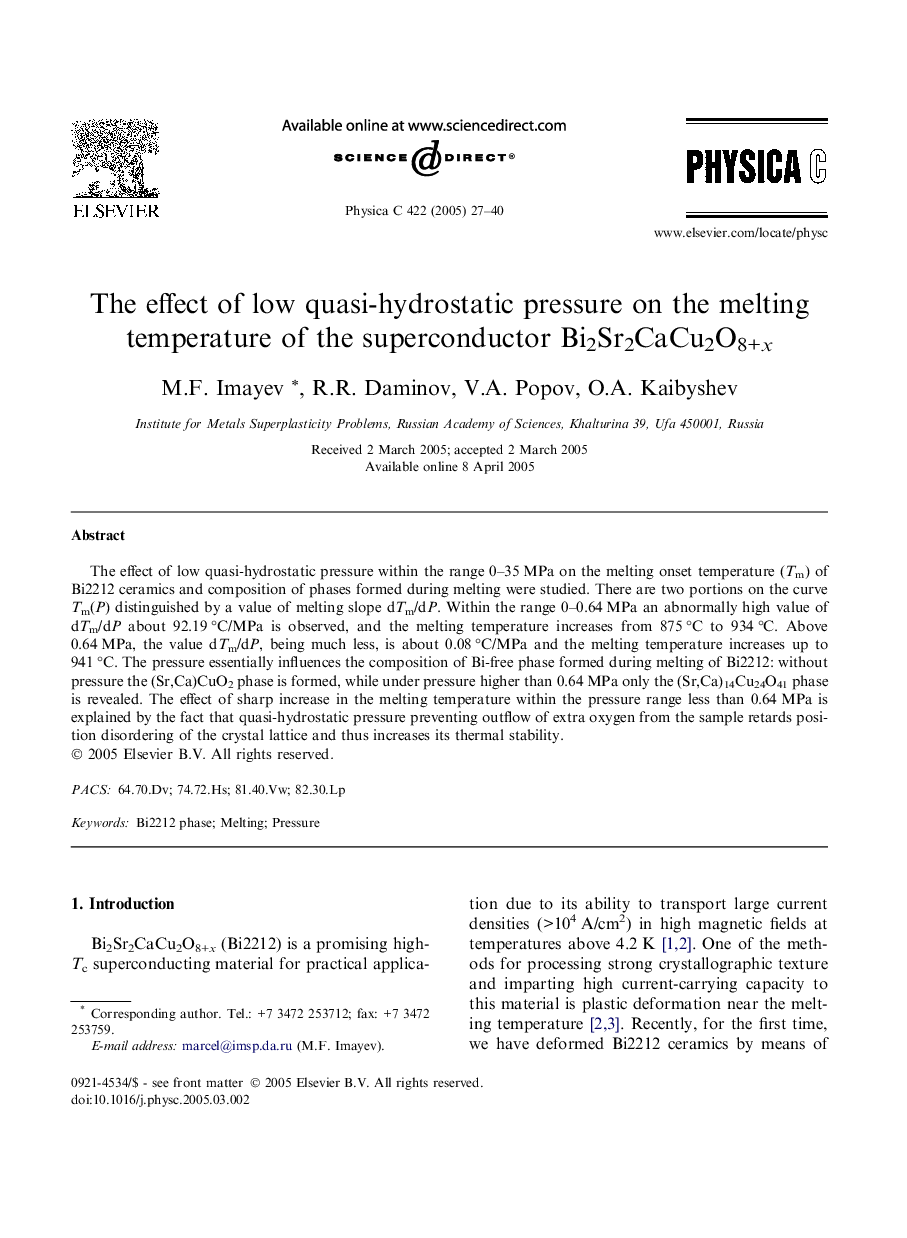| Article ID | Journal | Published Year | Pages | File Type |
|---|---|---|---|---|
| 9841869 | Physica C: Superconductivity and its Applications | 2005 | 14 Pages |
Abstract
The effect of low quasi-hydrostatic pressure within the range 0-35 MPa on the melting onset temperature (Tm) of Bi2212 ceramics and composition of phases formed during melting were studied. There are two portions on the curve Tm(P) distinguished by a value of melting slope dTm/dP. Within the range 0-0.64 MPa an abnormally high value of dTm/dP about 92.19 °C/MPa is observed, and the melting temperature increases from 875 °C to 934 °C. Above 0.64 MPa, the value dTm/dP, being much less, is about 0.08 °C/MPa and the melting temperature increases up to 941 °C. The pressure essentially influences the composition of Bi-free phase formed during melting of Bi2212: without pressure the (Sr,Ca)CuO2 phase is formed, while under pressure higher than 0.64 MPa only the (Sr,Ca)14Cu24O41 phase is revealed. The effect of sharp increase in the melting temperature within the pressure range less than 0.64 MPa is explained by the fact that quasi-hydrostatic pressure preventing outflow of extra oxygen from the sample retards position disordering of the crystal lattice and thus increases its thermal stability.
Related Topics
Physical Sciences and Engineering
Physics and Astronomy
Condensed Matter Physics
Authors
M.F. Imayev, R.R. Daminov, V.A. Popov, O.A. Kaibyshev,
